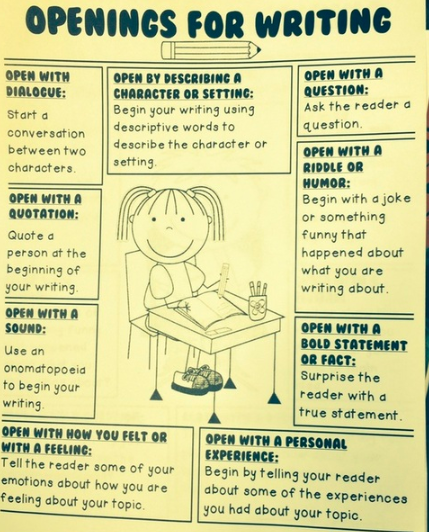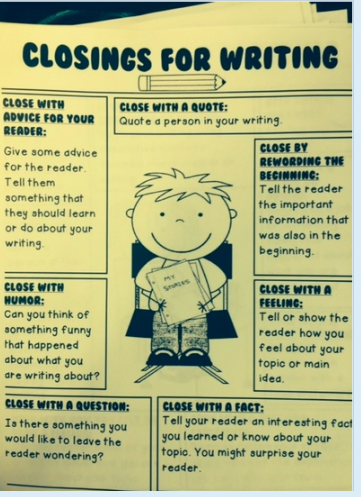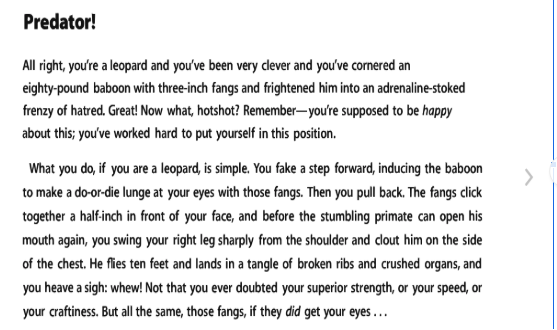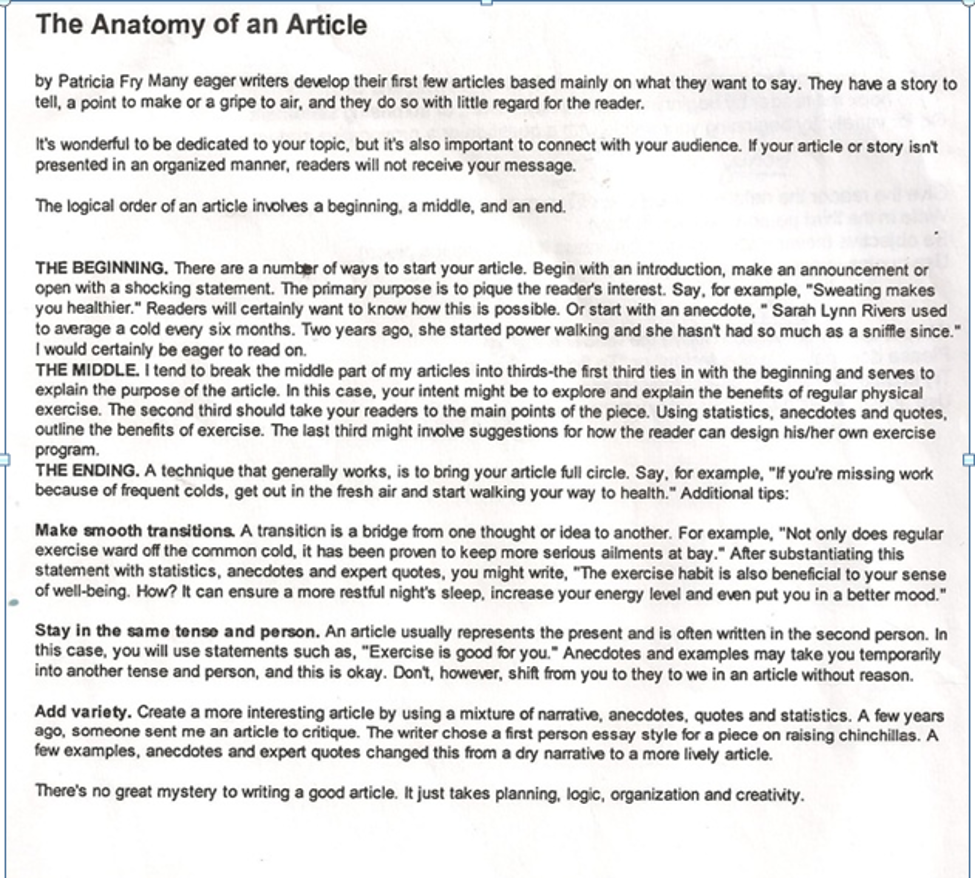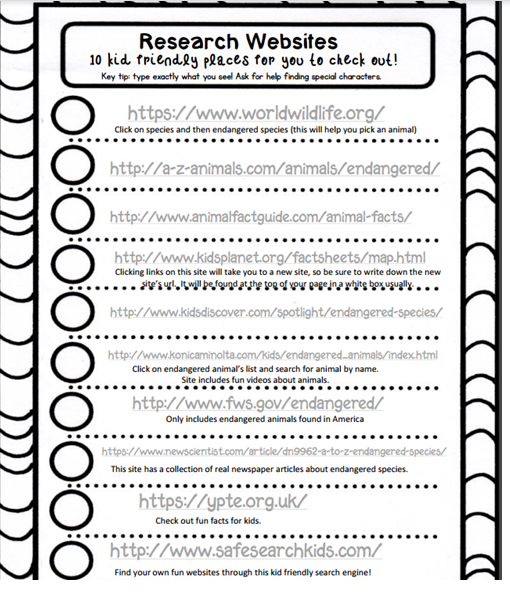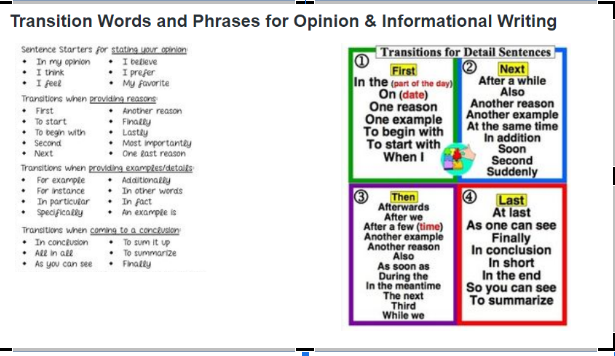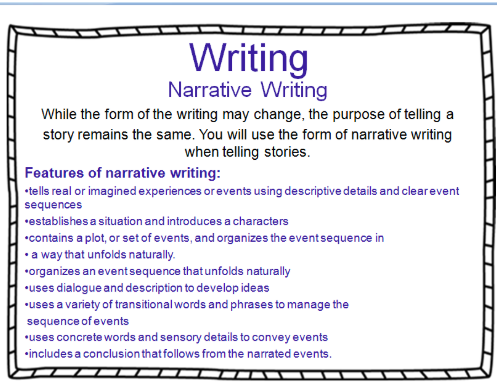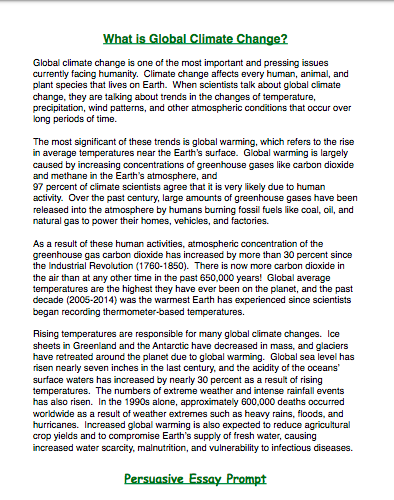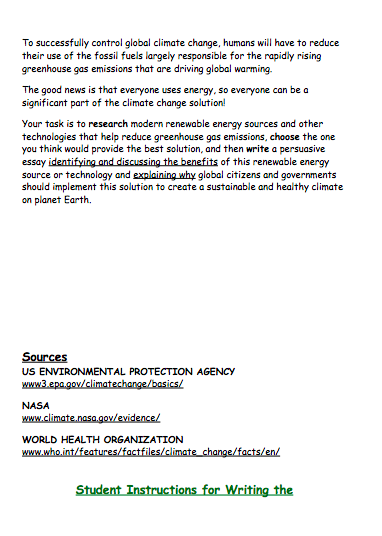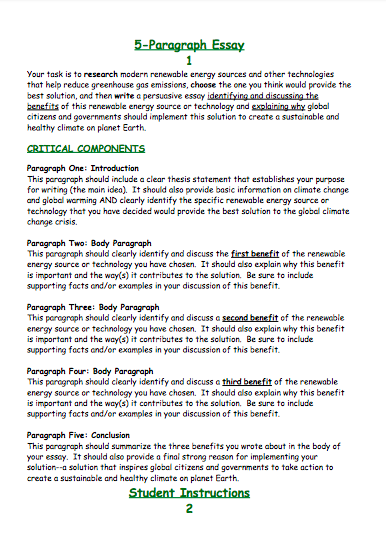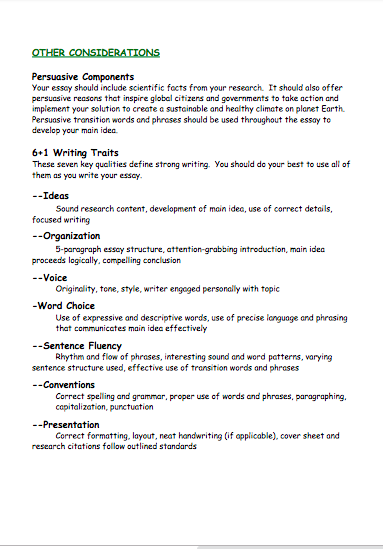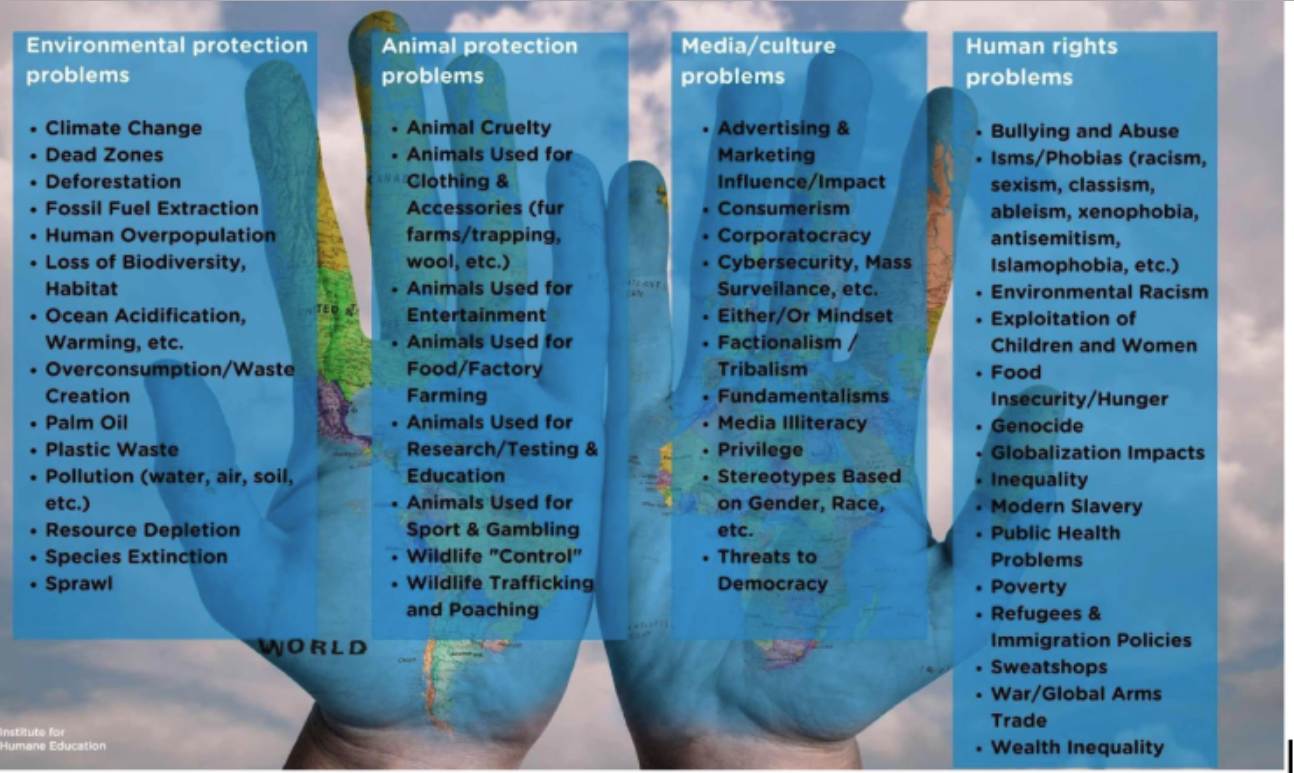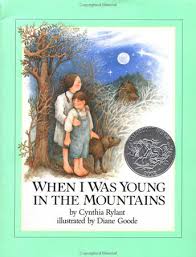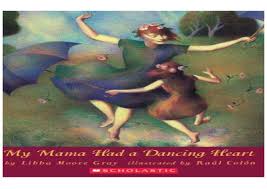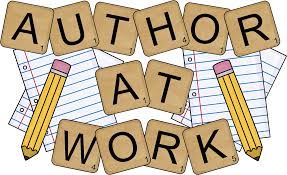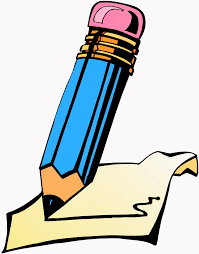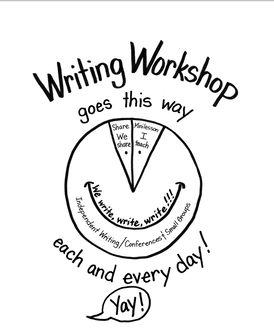WRITING WORKSHOP:
In this second unit, we will be immersed in opinion writing. Students will learn a variety of more sophisticated strategies for introducing their topics and students will learn to provide reasons to support their opinions as well as facts and details to elaborate on these reasons. Students will address counter-arguments and learn about multiple perspectives on different issues. We will work on logically organizing our ideas with varied reasons and evidence. Children will collect varied and specific evidence from research.
ENDANGERED SPECIES CHECKLIST:
ENDANGERED SPECIES CHECKLIST:
MAKE SURE YOUR ARTICLE ANSWERS THE FOLLOWING QUESTIONS:
MAKE SURE YOUR ARTICLE ANSWERS THE FOLLOWING QUESTIONS:
- How did my animal become endangered?
- Why is it endangered?
- What is being done to protect it?
- Why should people care about my special animal?
- How is it protected by Endangered Species Act?
- I chose a topic I am passionate about. _____
- My article has a sharpened angle-focus _____
- All supporting details and information pertains to my angle ____
- I have at least three subheadings and organized the information accurately under each subheading ___
- I have an engaging lead ___
- My ending leaves reader with an important idea, question, or call to action ___
- I have a nutgragh in the second paragraph that explains to my reader what they will be learning about _____
- I included fascinating facts and details that relate to my topic and angle ___
- I fully explain those fascinating facts and details _____
- The reader can hear my voice with techniques like second person narrative along with lots of descriptive and figurative language ____
- I included at least three domain specific vocabulary words and they’re bolded ____
- I have a glossary for these words at the end of my article ____
- I explored the Endangered Species Act and how my animal is protected or not by it _____
- I have a catchy title-headline that grabs my reader’s attention _____
- I used a two column format or another that makes it look like a newspaper or newsletter article ______
- I used an easy to read font that is 11-12 in size __
- I have at least two clear photos with captions underneath __
- Captions are whole sentences that explain what is in the photo. Caption font size is smaller than rest of text ___
- Fun-facts-sidebars are separated in a text box or boxed off ____
- I don’t have a lot of “white space” ___
- I have an MLA bibliography at the end of with at least four resources ____
- I proofread my work and paid attention to capitalization, punctuation, spelling, verb tenses (agree) and correct word choice ___
- My article is ready to be published in a class magazine about endangered species ____
INCLUDE INFO ABOUT ENDANGERED SPECIES ACT AND SHOW IF AND HOW YOUR ANIMAL IS PROTECTED
ENDANGERED SPECIES ACT: MAKE SURE YOU DO A GOOGLE SEARCH ABOUT YOUR ANIMAL AND ENDANGERED SPECIES ACT...DISCUSS HOW ANIMAL IS IMPACTED BY THIS LAW AND WHAT IS BEING DONE TO PROTECT THE SPECIEShttp://www.kidsplanet.org/factsheets/esa.htmlhttp://www.nwf.org/wildlife/wildlife-conservation/endangered-species-act.aspxhttp://www.ducksters.com/animals/endangered_animals.phphttp://www.ducksters.com/animals/how_animals_become_extinct.php
USE THIS SITE FOR HEADLINES: cooltext.com/
MLA CITATION MAKER: USE TO CITE YOUR RESOURCES-AFTER COPYING AND PASTING HYPERLINKS INTO A DOCUMENT
MLA CITATION MAKER:http://www.citationmachine.net/mla/cite-a-book/edit
- Go to website. Select type of text you are citing: book, website, article, etc. Hit search. Make sure you are using MLA FORMAT.
- Choose correct text when your search is generated.
- Add as many fields as possible. Most likely, author and publisher will already be filled in. You may have to fill in city, state, number of pages (for book). Info is at the front of the book on copyright page. Year of publication will probably be included already for books. If not add. Once you have generated an entry, hit copy and paste to a document.
- When citing a website, make sure you click on website. Copy and paste URL address-hyperlink. Hit search and it will come up with what you are looking for. Many internet articles will not have author. Include if it does. Date of website was published will be at the top or the bottom of the home page.
- Make sure you have at least four resources used--try to include one offline resource ("real" book, magazine, encyclopedia).
- Remember that Wiki pages don't count count!.
PEER CONFERENCE FORMS:
| peer_conferences.doc | |
| File Size: | 72 kb |
| File Type: | doc |
ENDANGERED SPECIES FEATURE ARTICLES REMINDERS: PLEASE REVISIT CLASS MAGAZINE TO HELP YOU FORMAT YOUR ARTICLE. THOSE ARE GREAT MENTOR TEXTS! USE RUBRIC TO HELP, TOO!
| endangered_species_reminders.docx | |
| File Size: | 225 kb |
| File Type: | docx |
MORE TIPS TO HELP YOU COMPOSE YOUR ARTICLES:
WHEN INTEGRATING RESEARCH AND QUOTES IN YOUR ARTICLES:
READ: http://writing2.richmond.edu/writing/wweb/journalism/quotes.html
https://heartifb.com/2013/06/06/5-ways-to-weave-quotations-into-a-feature-article/
1.Keep an open mind. Don't assume that you understand all the aspects or parts of your topic. Expect that your understanding will evolve as you report. If it doesn't, you may not have reported thoroughly or aggressively enough.
Once you're ready to write:
2. Decide on an approach. Outlining your story is the best way to start. This means reviewing your notes, marking the most interesting or articulate quotes, making a list of important points, and creating a structure into which you can fit your information. Spend extra time of the beginning of your story. Readers will decide whether to proceed based on the capacity of your lede to grab their interest.
3. Focus on what's most compelling. Before you start writing, think through all the information you have and all the points you plan to make. What's surprising? What's important? What's useful?
4. Show, don't tell. It is tempting to describe a room as messy or a person as nice. But carefully-observed details and well-chosen verbs make a much stronger impression than adjectives.
5. Put your story in context. You must help answer a reader's biggest question about any story: Why should I care?
6. Don't overuse direct quotes. Sometimes you can best capture a mood with your own prose. Think of direct quotes as icing on a cake -- they enhance, but they shouldn't form the substance of your story. The quotes you do use must be attributed, always. The reader should not have to guess who is talking.
7.Fill holes. Are there questions raised by your story that you have not answered? Ask a friend, teacher, editor or fellow reporter to read through your story and tell you what else he or she would want to know.
8.Triple-check for accuracy. Spell names right. Get grade levels and titles right. Get facts right. If you are unsure of something and cannot verify it, leave it out. Before you turn in your story, ask yourself these questions: Have I attributed or documented all my facts? Are the quotes in my story presented fairly and in context? Am I prepared to publicly defend my facts if they are questioned?
9.Proofread. Do not turn in a story with spelling or grammatical mistakes. If you're not sure of grammar, consult a copy of Strunk and White's The Elements of Style, or read it online at http://www.columbia.edu/acis/bartleby/strunk
Writing the Article
1
Write a hook to open your story. Your first paragraph is your chance to hook your reader and draw them into your story. If the opening paragraph is dry or difficult to follow, you will lose your reader and they won’t continue on to the rest of your story.[7]
Start with an interesting fact, a quote, or an anecdote for a good hook.
Your opening paragraph should only be about 2-3 sentences.
2
Expand on your lead in the second paragraph. While your lead might draw people in, your second paragraph (and subsequent paragraphs) need to start explaining the reason for the story. Why are we reading this story? What is important about it?
3
Follow your outline. You’ve drafted your article in outline form, which can help you stay on track to building a good feature article. The outline can also help you remember how details connect to each other and how quotes support certain points that you’re making.
Be flexible, however. Sometimes when you write, the flow makes sense in a way that is different from your outline. Be ready to change the direction of your piece if it seems to read better that way.
4
Show, don’t tell. By writing a feature article, you have the chance to describe people and scenes to the reader.[8] Describe a setting or person so that the reader can clearly envision it in their mind.
5
Don’t use too many quotes. While it can be tempting to include the interviewee’s own words in the story, don’t rely too much on quoting them. Otherwise, this becomes more of a straightforward interview. Write around their quotes to give them context, build the story and help the reader interpret what the interviewee is saying.
6
Choose language that is appropriate to your readers. Consider the target audience of the publication for which you are writing and write to their level and interest. Do not assume they are familiar with what you’re talking about, so you may need to explain certain things. Be sure to spell out acronyms and explain jargon or slang. Write in a style that is more conversational, rather than stiff and academic.[9]
7
Keep your opinion out of the article. A feature article is a piece that conveys information and detail about a person or phenomenon. It is not an opportunity for you to give your opinion on a topic. Rather, your personality is conveyed through your writing style.[10]
8
Revise your article. Once you finish writing, put the article away for a day to get some distance from it. Come back to it when you are fresh and read through it all the way. Think of ways to sharpen descriptions, clarify points and streamline
explanations. What areas do you need to cut out? What areas need additional information?
READ: http://writing2.richmond.edu/writing/wweb/journalism/quotes.html
https://heartifb.com/2013/06/06/5-ways-to-weave-quotations-into-a-feature-article/
1.Keep an open mind. Don't assume that you understand all the aspects or parts of your topic. Expect that your understanding will evolve as you report. If it doesn't, you may not have reported thoroughly or aggressively enough.
Once you're ready to write:
2. Decide on an approach. Outlining your story is the best way to start. This means reviewing your notes, marking the most interesting or articulate quotes, making a list of important points, and creating a structure into which you can fit your information. Spend extra time of the beginning of your story. Readers will decide whether to proceed based on the capacity of your lede to grab their interest.
3. Focus on what's most compelling. Before you start writing, think through all the information you have and all the points you plan to make. What's surprising? What's important? What's useful?
4. Show, don't tell. It is tempting to describe a room as messy or a person as nice. But carefully-observed details and well-chosen verbs make a much stronger impression than adjectives.
5. Put your story in context. You must help answer a reader's biggest question about any story: Why should I care?
6. Don't overuse direct quotes. Sometimes you can best capture a mood with your own prose. Think of direct quotes as icing on a cake -- they enhance, but they shouldn't form the substance of your story. The quotes you do use must be attributed, always. The reader should not have to guess who is talking.
7.Fill holes. Are there questions raised by your story that you have not answered? Ask a friend, teacher, editor or fellow reporter to read through your story and tell you what else he or she would want to know.
8.Triple-check for accuracy. Spell names right. Get grade levels and titles right. Get facts right. If you are unsure of something and cannot verify it, leave it out. Before you turn in your story, ask yourself these questions: Have I attributed or documented all my facts? Are the quotes in my story presented fairly and in context? Am I prepared to publicly defend my facts if they are questioned?
9.Proofread. Do not turn in a story with spelling or grammatical mistakes. If you're not sure of grammar, consult a copy of Strunk and White's The Elements of Style, or read it online at http://www.columbia.edu/acis/bartleby/strunk
Writing the Article
1
Write a hook to open your story. Your first paragraph is your chance to hook your reader and draw them into your story. If the opening paragraph is dry or difficult to follow, you will lose your reader and they won’t continue on to the rest of your story.[7]
Start with an interesting fact, a quote, or an anecdote for a good hook.
Your opening paragraph should only be about 2-3 sentences.
2
Expand on your lead in the second paragraph. While your lead might draw people in, your second paragraph (and subsequent paragraphs) need to start explaining the reason for the story. Why are we reading this story? What is important about it?
3
Follow your outline. You’ve drafted your article in outline form, which can help you stay on track to building a good feature article. The outline can also help you remember how details connect to each other and how quotes support certain points that you’re making.
Be flexible, however. Sometimes when you write, the flow makes sense in a way that is different from your outline. Be ready to change the direction of your piece if it seems to read better that way.
4
Show, don’t tell. By writing a feature article, you have the chance to describe people and scenes to the reader.[8] Describe a setting or person so that the reader can clearly envision it in their mind.
5
Don’t use too many quotes. While it can be tempting to include the interviewee’s own words in the story, don’t rely too much on quoting them. Otherwise, this becomes more of a straightforward interview. Write around their quotes to give them context, build the story and help the reader interpret what the interviewee is saying.
6
Choose language that is appropriate to your readers. Consider the target audience of the publication for which you are writing and write to their level and interest. Do not assume they are familiar with what you’re talking about, so you may need to explain certain things. Be sure to spell out acronyms and explain jargon or slang. Write in a style that is more conversational, rather than stiff and academic.[9]
7
Keep your opinion out of the article. A feature article is a piece that conveys information and detail about a person or phenomenon. It is not an opportunity for you to give your opinion on a topic. Rather, your personality is conveyed through your writing style.[10]
8
Revise your article. Once you finish writing, put the article away for a day to get some distance from it. Come back to it when you are fresh and read through it all the way. Think of ways to sharpen descriptions, clarify points and streamline
explanations. What areas do you need to cut out? What areas need additional information?
- Paraphrase. You can introduce studies that agree with you (Smith 123; Jones and Chin 123) and those that disagree with you (Mohan and Corbett 200) without interrupting your own argument. (Note how efficiently I did that — the parenthetical citations are designed to preserve the flow of ideas in the sentences that refer to outside ideas.)
- Quote Selectively. If you must use the original author’s language, work a few words from the outside source into a sentence you wrote yourself. (If you can’t supply at least as many words of your own analysis of and rebuttal to the quoted passage, then you are probably padding.)
- Avoid Summary. If you must quote several lines of another author’s language, don’t interrupt the flow of your own argument in order to summarize the material you have just quoted. (Generally speaking, summarizing someone else’s ideas is one of the easiest ways to churn out words; while students often turn to summary when they want to boost their word count, paragraphs that merely summarize are not as intellectually engaging, and therefore not worth as many points, as paragraphs that analyze, synthesize, and evaluate.
SELECTING FASCINATING FACTS THAT RELATE TO YOUR THEME:
Link: We want to avoid getting overwhelmed by too much information about our topic. We do not need all the facts. Rather we just need the important ones that relate to the main idea.
Teach: As you collect research, you encounter lots of facts. Some are things we all know. Other facts are boring. Others make you go wow, can that really be true? Fascinating facts make a piece of non fiction writing come alive! Let’s look at two examples.From the book entitled A Drop of Water, the author notices that “Its shimmering liquid is five hundred times thinker than a human hair.” Wow, that would make me want to include that fact in my article.
Also, From All About Rattlesnakes, the author notices, “The rattlesnake’s heat sensing capability can detect and pinpoint prey even in total darkness as long as the prey animal’s body temperature is warmer than its surroundings. As you research, look out for remarkable facts that relate to your main idea and angle. If you are amazed, then so will your audience. AND: When establishing the significance of importance of a fact, you need to explain so the reader understands what facts you want to emphasize and why a particular fact is important. So ask yourself:
• Do you have important facts that are buried and not fully explained?
• Are there any places where the reader may not understand the importance of what you have written? You may need to add a sentence to explain why it is important.
Teach: As you collect research, you encounter lots of facts. Some are things we all know. Other facts are boring. Others make you go wow, can that really be true? Fascinating facts make a piece of non fiction writing come alive! Let’s look at two examples.From the book entitled A Drop of Water, the author notices that “Its shimmering liquid is five hundred times thinker than a human hair.” Wow, that would make me want to include that fact in my article.
Also, From All About Rattlesnakes, the author notices, “The rattlesnake’s heat sensing capability can detect and pinpoint prey even in total darkness as long as the prey animal’s body temperature is warmer than its surroundings. As you research, look out for remarkable facts that relate to your main idea and angle. If you are amazed, then so will your audience. AND: When establishing the significance of importance of a fact, you need to explain so the reader understands what facts you want to emphasize and why a particular fact is important. So ask yourself:
• Do you have important facts that are buried and not fully explained?
• Are there any places where the reader may not understand the importance of what you have written? You may need to add a sentence to explain why it is important.
INCORPORATING VOICE INTO YOUR NON FICTION ARTICLES:
VOICE:
• Writer’s presence is clearly evident. So put yourself into the writing.
• Let your passion for your topic come through
• Consider use of rhythm and repetition
• Humor is used including using expressions (so pay attention to how people speak!)
• Vary sentence length. Consider using one word sentences.
• Make sure you have the right voice for your audience.
• Write with authority and confidence.
• Talk directly to the reader (use second person narrative).
• Writer’s presence is clearly evident. So put yourself into the writing.
• Let your passion for your topic come through
• Consider use of rhythm and repetition
• Humor is used including using expressions (so pay attention to how people speak!)
• Vary sentence length. Consider using one word sentences.
• Make sure you have the right voice for your audience.
• Write with authority and confidence.
• Talk directly to the reader (use second person narrative).
ENDANGERED SPECIES: CLASS MAGAZINE
| magazine_.pdf | |
| File Size: | 64156 kb |
| File Type: | |
MENTOR TEXT: MONSTER HURRICANE
| monster_hurricane.docx | |
| File Size: | 413 kb |
| File Type: | docx |
SUBHEADINGS:
| subheadings.pdf | |
| File Size: | 1663 kb |
| File Type: | |
LEADS AND ENDINGS:
| leads_and_endingsfourthgraders__3_.ppt | |
| File Size: | 485 kb |
| File Type: | ppt |
MAKING IT LIVELY:
MAKING IT LIVELY: I can create a fab feature by “Making it Lively.” Mentor text: Predator. Connect: With features, it is not enough to just teach or inform. We also need to entertain so we do not put our readers to sleep. An anecdote is one way to do this. Today, we will look at other ways.
Teach: As I read aloud this excerpt entitled, Predator, jot down what you notice:
• What makes it interesting?
• Use action verbs
• Slow down action
• Use humorous asides
• Authentic details
• Great, original voice
As you begin drafting, try writing a detailed paragraph about your topic. Make sure it is wide awake and sentences are brought to life. Also, try writing at least two anecdotes (two short stories/scenes) that would support the main idea/angle of your feature.
Teach: As I read aloud this excerpt entitled, Predator, jot down what you notice:
• What makes it interesting?
- Second person narrative
- High level-domain specific vocabulary
- Author is speaking directly to the reader
- Descriptive language
- Figurative language
- Asks questions
- Uses a lot of action and action--puts you in leopard’s paws
- Authentic, details
• Use action verbs
• Slow down action
• Use humorous asides
• Authentic details
• Great, original voice
As you begin drafting, try writing a detailed paragraph about your topic. Make sure it is wide awake and sentences are brought to life. Also, try writing at least two anecdotes (two short stories/scenes) that would support the main idea/angle of your feature.
| predator.pdf | |
| File Size: | 385 kb |
| File Type: | |
ENDANGERED SPECIES:
THINK ABOUT WHAT YOU WANT TO TEACH THE READER ABOUT YOUR ANIMAL
WHAT ARE SOME OF MY ANIMAL’S MOST UNIQUE OR SPECIAL FEATURES?
HOW AND WHY DID MY ANIMAL BECOME ENDANGERED?
WAYS WE CAN HELP SAVE THE ENDANGERED SPECIES?
READ, READ READ MORE:
http://www.worldwildlife.org/pages/infographic-sea-turtles (SAMPLE)
LINKS: https://www.wonderopolis.org/
http://www.animalfactguide.com/animal-facts/
http://www.worldwildlife.org/
http://www.kidsplanet.org/factsheets/map.html
https://online.kidsdiscover.com/unit/endangered-species/topic/what-is-an-endangered-species
https://kids.kiddle.co/Endangered_species
ENDANGERED SPECIES ACT: MAKE SURE YOU DO A GOOGLE SEARCH ABOUT YOUR ANIMAL AND ENDANGERED SPECIES ACT...DISCUSS HOW ANIMAL IS IMPACTED BY THIS LAW AND WHAT IS BEING DONE TO PROTECT THE SPECIES
http://www.kidsplanet.org/factsheets/esa.html
http://www.nwf.org/wildlife/wildlife-conservation/endangered-species-act.aspx
http://www.ducksters.com/animals/endangered_animals.php
http://www.ducksters.com/animals/how_animals_become_extinct.php
http://www.worldwildlife.org/pages/infographic-sea-turtles
LINKS: http://www.animalfactguide.com/animal-facts/
http://www.kidsplanet.org/factsheets/map.html
https://online.kidsdiscover.com/unit/endangered-species/topic/what-is-an-endangered-species
Start collecting fascinating facts and information that relate to your endangered species but keep in mind that you are mostly teaching reader about not only why your animal is important and has special features but how and why it became endangered and what is being done to protect it.
WHAT ARE SOME OF MY ANIMAL’S MOST UNIQUE OR SPECIAL FEATURES?
HOW AND WHY DID MY ANIMAL BECOME ENDANGERED?
WAYS WE CAN HELP SAVE THE ENDANGERED SPECIES?
READ, READ READ MORE:
http://www.worldwildlife.org/pages/infographic-sea-turtles (SAMPLE)
LINKS: https://www.wonderopolis.org/
http://www.animalfactguide.com/animal-facts/
http://www.worldwildlife.org/
http://www.kidsplanet.org/factsheets/map.html
https://online.kidsdiscover.com/unit/endangered-species/topic/what-is-an-endangered-species
https://kids.kiddle.co/Endangered_species
ENDANGERED SPECIES ACT: MAKE SURE YOU DO A GOOGLE SEARCH ABOUT YOUR ANIMAL AND ENDANGERED SPECIES ACT...DISCUSS HOW ANIMAL IS IMPACTED BY THIS LAW AND WHAT IS BEING DONE TO PROTECT THE SPECIES
http://www.kidsplanet.org/factsheets/esa.html
http://www.nwf.org/wildlife/wildlife-conservation/endangered-species-act.aspx
http://www.ducksters.com/animals/endangered_animals.php
http://www.ducksters.com/animals/how_animals_become_extinct.php
http://www.worldwildlife.org/pages/infographic-sea-turtles
LINKS: http://www.animalfactguide.com/animal-facts/
http://www.kidsplanet.org/factsheets/map.html
https://online.kidsdiscover.com/unit/endangered-species/topic/what-is-an-endangered-species
Start collecting fascinating facts and information that relate to your endangered species but keep in mind that you are mostly teaching reader about not only why your animal is important and has special features but how and why it became endangered and what is being done to protect it.
FEATURE ARTICLES INCORPORATING ANECDOTES: MENTOR TEXT-TATTLER RATTLER: http://articles.chicagotribune.com/1995-08-01/features/9508010020_1_rattlers-rattlesnakes-swallow
Anecdotes are short, brief stories that create drama. They are used to share
information. They are small scenes and used in features for several reasons:
1. To make a point without being overbearing.
2. To use an example helping to clarify a position or point of view.
3. To encourage and inspire others.
4. To promote laughter.
5. To remember an historical event and or person.
6. Anecdotes are used to take factual information and get it to stand up
and reveal the essence and heart of your story!
A story or anecdote is a great way to start your writing. It let’s us hear the
character speaking. It makes us feel like we are right there. REVISIT TATTLER RATTLER… Today, you will practice
writing a narrative lead.
information. They are small scenes and used in features for several reasons:
1. To make a point without being overbearing.
2. To use an example helping to clarify a position or point of view.
3. To encourage and inspire others.
4. To promote laughter.
5. To remember an historical event and or person.
6. Anecdotes are used to take factual information and get it to stand up
and reveal the essence and heart of your story!
A story or anecdote is a great way to start your writing. It let’s us hear the
character speaking. It makes us feel like we are right there. REVISIT TATTLER RATTLER… Today, you will practice
writing a narrative lead.
ANECDOTE SAMPLE:
ENDANGERED SPECIES MENTOR TEXT:
ENDANGERED SPECIES RUBRIC:
| endangeredspeciesfeature_article_rubric__2_.docx | |
| File Size: | 14 kb |
| File Type: | docx |
FEATURE ARTICLE SLIDE SHOW: https://www.slideshare.net/methlal/feature-writing4832
INFORMATIONAL & FEATURE ARTICLE WRITING-FOCUS ON ENDANGERED SPECIES-LINKS TO RATTLER TATTLER AND ELEPHANTS NEVER FORGET MENTOR TEXTS: http://articles.chicagotribune.com/1995-08-01/features/9508010020_1_rattlers-rattlesnakes-swallow
https://www.yumpu.com/en/document/view/30357434/elephants-never-forget-teaching-guide-and-time-for-kids
ANATOMY OF A FEATURE ARTICLE:
FEATURES OF FEATURES:
• Insightful headings-titles
• Subheadings
• Photos
• Illustrations
• Captions
• Catchy leads
• Big bang endings
• Diagrams
• Facts
• Anecdotes
• Definitions
• Second-person narrative (speaking to the reader “you”)
• Quotes from experts, famous people and people affected by the subject
• Statistics
• Use of punctuation, parenthesis, bullets, dash
• Words in bold
• Fun facts
• Timelines
• Angles-nutgrafs
• Insightful headings-titles
• Subheadings
• Photos
• Illustrations
• Captions
• Catchy leads
• Big bang endings
• Diagrams
• Facts
• Anecdotes
• Definitions
• Second-person narrative (speaking to the reader “you”)
• Quotes from experts, famous people and people affected by the subject
• Statistics
• Use of punctuation, parenthesis, bullets, dash
• Words in bold
• Fun facts
• Timelines
• Angles-nutgrafs
OVERVIEW OF INFORMATIONAL-FEATURE ARTICLE WRITING:
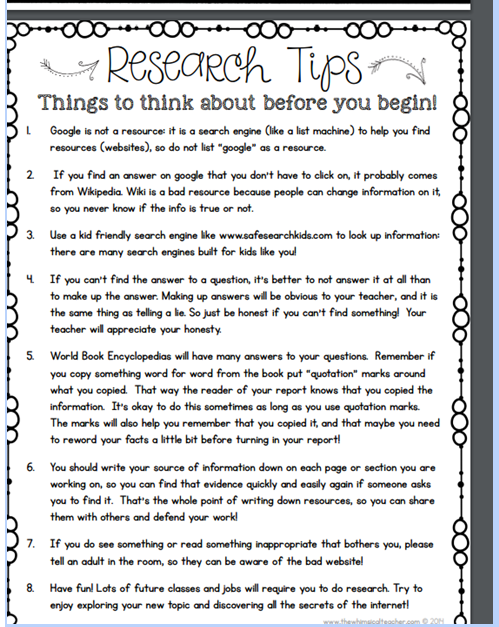
Genre and Structure: Genre describes the type of text a passage is. Examples of genre include nonfiction, fiction, poetry, and drama. The way an author organizes the information is called the structure. One common structure found in nonfiction uses headings to identify the different topics. There are other organizational structures of informational texts, such as cause-effect, problem-solution, argument-counterargument, and sequence.
Cite Text Evidence
• What features of informational texts
do you find on these pages?
• How is the text structured?
• What types of information are shared
on these pages?
I can write effectively with a purpose in mind (in informative texts?) Informative/Explanatory Writing
The purpose for writing informational/explanatory text is to inform or explain. Before you begin writing, you should establish a purpose, or have a reason for writing. In order to inform readers effectively, you should keep in mind the elements of informative/explanatory writing:
• tells about real people, places, or events
• includes facts, details, and descriptions
• uses visuals, such as illustrations, diagrams, or photographs
contains an introduction, body, and conclusion
We will be writing about an endangered animal of our choice during this unit. Let’s review some important websites and research tips:
Cite Text Evidence
• What features of informational texts
do you find on these pages?
• How is the text structured?
• What types of information are shared
on these pages?
I can write effectively with a purpose in mind (in informative texts?) Informative/Explanatory Writing
The purpose for writing informational/explanatory text is to inform or explain. Before you begin writing, you should establish a purpose, or have a reason for writing. In order to inform readers effectively, you should keep in mind the elements of informative/explanatory writing:
• tells about real people, places, or events
• includes facts, details, and descriptions
• uses visuals, such as illustrations, diagrams, or photographs
contains an introduction, body, and conclusion
We will be writing about an endangered animal of our choice during this unit. Let’s review some important websites and research tips:
TRANSITIONAL WORDS AND PHRASES: http://eastjackson4thgrade.weebly.com/transition-words-and-phrases.html https://www.readingrockets.org/content/pdfs/transition%20words.pdf
MYTH WRITING WORKSHOP: teacher.scholastic.com/writewit/mff/mythswshop_index.htm
I can create my own myth by exploring and explaining a natural phenomenon.
| fictionalwritinglegendmythfourthgrade.docx | |
| File Size: | 15 kb |
| File Type: | docx |
| fictional_writing_checklist_peer_assessment__2_.docx | |
| File Size: | 122 kb |
| File Type: | docx |
1. Pick out the natural phenomenon you want to write about.
Make it something that really interests you. If you live in the desert, you might want to think about the way a single rainstorm can cause a flood. If you live in the North, think about the way a snowstorm can cover the ground like an icy blanket. If you live near the ocean, consider the way the tide comes in and out each day. In other words, find something that is familiar that you can observe.
2. Observe carefully.
It helps to know a thing well before trying to make up a story about it. The old myths were created by poets and storytellers who were well-acquainted with nature. Find out as much as you can about the natural phenomenon that you've chosen. Go to the library and find out what it is scientifically — and read what other storytellers have said about it. WRITE A SUMMARY USING SWBST AND DESCRIBE MORAL-LESSON OF THE MYTH ABOUT THIS PHENOMENON.
Make it something that really interests you. If you live in the desert, you might want to think about the way a single rainstorm can cause a flood. If you live in the North, think about the way a snowstorm can cover the ground like an icy blanket. If you live near the ocean, consider the way the tide comes in and out each day. In other words, find something that is familiar that you can observe.
2. Observe carefully.
It helps to know a thing well before trying to make up a story about it. The old myths were created by poets and storytellers who were well-acquainted with nature. Find out as much as you can about the natural phenomenon that you've chosen. Go to the library and find out what it is scientifically — and read what other storytellers have said about it. WRITE A SUMMARY USING SWBST AND DESCRIBE MORAL-LESSON OF THE MYTH ABOUT THIS PHENOMENON.
PERSUASIVE WRITING TASK ON RENEWABLE ENERGY:
| 4th_grade_persuasive_writing_rubric_.docx | |
| File Size: | 14 kb |
| File Type: | docx |
TOPICS KIDS CARE ABOUT:
- Bullying
- Cyberbullying
- Parent pressures to be successful
- Cliques
- Censorship
- Overpaid pro athletes
- Violent video games and or tv shows
- Inappropriate language in music and music videos
- Family members who smoke
- Year round school
- Extended school day
- Pollution
- Global warming-protecting the environment-reducing our carbon footprint
- Animal abuse
- Internet safety
- Childhood obesity
- Lowering voting age
- Bad celebrity role models
- Gun control
- Universal and affordable health care
- Homelessness
- Money spent on new sports stadiums
GLOBAL ETHICAL PROBLEMS:
WIND ENERGY POETRY AND RUBRIC
| wind_energy_acrostic_poem.docx | |
| File Size: | 10 kb |
| File Type: | docx |
| _acrostic_poetry_rubric__2_.docx | |
| File Size: | 16 kb |
| File Type: | docx |
CRACKING OPEN WORDS:
| crackingopenwords.pdf | |
| File Size: | 1257 kb |
| File Type: | |
CHAINING OUR MEMORIES:
| chainingourmemories.pdf | |
| File Size: | 3787 kb |
| File Type: | |
| when_i_was_young_in_the_mountainstext.pdf | |
| File Size: | 443 kb |
| File Type: | |
| memorychainingbookletrubric.doc | |
| File Size: | 27 kb |
| File Type: | doc |
| my_mama_had_a_dancing_heart_1.pdf | |
| File Size: | 489 kb |
| File Type: | |
THE WRITER'S NOTEBOOK:
IT'S A PLACE TO:
THINK OUT LOUD
DREAM
SCHEME
ASK QUESTIONS
WONDER
WANDER
PLAN
OBSERVE
IMAGINE
DESCRIBE
EXPLAIN
CREATE
SHARE
CARE
COLLECT
RESPOND
THINK OUT LOUD
DREAM
SCHEME
ASK QUESTIONS
WONDER
WANDER
PLAN
OBSERVE
IMAGINE
DESCRIBE
EXPLAIN
CREATE
SHARE
CARE
COLLECT
RESPOND
| writersnotebook.doc | |
| File Size: | 85 kb |
| File Type: | doc |
RULES:1. Save everything, it’s all part of the history of the piece of writing, plus you never know what you might want to come back to later and use.
2. Date and label everything you write to keep track of what you’ve done.
3. Write on one side of the paper only, and always double space. Both will make revision, polishing, and editing easier and more productive.
4. Draft your writing in sentences and paragraphs.
5. Get into the habit of punctuating and spelling as well as you can while you’re composing.
6. Understand that writing is thinking. Do nothing to distract the other writers. Don’t put your words into our brains as we’re struggling to find our own. Instead, find your private, internal writing place, lock the door and listen to your voice.
7. Whisper when conferencing with teacher and peers.
8. Use the conference area for peer conferencing, and complete the Peer Conferencing Sheet so the writer has a record of what was discussed and can form a plan of action.
9. When you’re stuck or uncertain, use the resources available to you in this room, including your writing notes and your lists of writing topics, and tap the techniques you’ve been shown in conferences and mini-lessons.
10. Everything you intend to publish needs revision. One draft is never enough.
11. Self-edit as completely as you can in a different colour, and complete an editing checklist to show what you know about conventions of writing.
12. When a piece of writing is finished, clip or staple everything together, including drafts, notes, lists, editing checklist, and peer conference form. File it in the publish section of your binder, with the final copy on top.
13. Write as well and as much as you can, and work hard; dedication makes a good writer.
2. Date and label everything you write to keep track of what you’ve done.
3. Write on one side of the paper only, and always double space. Both will make revision, polishing, and editing easier and more productive.
4. Draft your writing in sentences and paragraphs.
5. Get into the habit of punctuating and spelling as well as you can while you’re composing.
6. Understand that writing is thinking. Do nothing to distract the other writers. Don’t put your words into our brains as we’re struggling to find our own. Instead, find your private, internal writing place, lock the door and listen to your voice.
7. Whisper when conferencing with teacher and peers.
8. Use the conference area for peer conferencing, and complete the Peer Conferencing Sheet so the writer has a record of what was discussed and can form a plan of action.
9. When you’re stuck or uncertain, use the resources available to you in this room, including your writing notes and your lists of writing topics, and tap the techniques you’ve been shown in conferences and mini-lessons.
10. Everything you intend to publish needs revision. One draft is never enough.
11. Self-edit as completely as you can in a different colour, and complete an editing checklist to show what you know about conventions of writing.
12. When a piece of writing is finished, clip or staple everything together, including drafts, notes, lists, editing checklist, and peer conference form. File it in the publish section of your binder, with the final copy on top.
13. Write as well and as much as you can, and work hard; dedication makes a good writer.
EXPECTATIONS & RULES FOR WRITING WORKSHOP & LEADING A WRITERLY LIFE:
MOST IMPORTANT: Carry your notebook with you at all times. You never know when you will be inspired to jot down your story ideas or observations.
EXPECTATIONS:
1. Find topics and purposes for your writing that matter to you, your life, who you are, and whom you want to become.
2. Keep a list of your possible topics as a writer.
3. Try new topics, purposes, audiences, genres, forms, and techniques.
4. Make your own decisions about what’s working and what needs more work in pieces of your writing. Be the first responder to your writing, and read yourself with a critical, literary eye and ear.
5. Listen and ask questions about and comment on others’ writing in ways that help them improve their writing.
6. Take notes of information presented in writing mini-lessons, recorded chronologically.
7. Recognize that readers’ eyes and minds need your writing to be conventional in format, spelling, punctuation, and usage. Work toward conventionality and legibility, and use everything you know about format, spelling, punctuation, and usage as you compose.
8. Take care of the writing materials and resources.
9. Each day, establish and work toward significant, relevant goals for yourself as a writer.
10. In every writing workshop, take a deliberate stance toward writing well: try to make your writing effective and use what you’ve been shown in conferences and mini-lessons to help you get there.
11. Work hard in writing workshop. Remain focused and on task during class.
1. Find topics and purposes for your writing that matter to you, your life, who you are, and whom you want to become.
2. Keep a list of your possible topics as a writer.
3. Try new topics, purposes, audiences, genres, forms, and techniques.
4. Make your own decisions about what’s working and what needs more work in pieces of your writing. Be the first responder to your writing, and read yourself with a critical, literary eye and ear.
5. Listen and ask questions about and comment on others’ writing in ways that help them improve their writing.
6. Take notes of information presented in writing mini-lessons, recorded chronologically.
7. Recognize that readers’ eyes and minds need your writing to be conventional in format, spelling, punctuation, and usage. Work toward conventionality and legibility, and use everything you know about format, spelling, punctuation, and usage as you compose.
8. Take care of the writing materials and resources.
9. Each day, establish and work toward significant, relevant goals for yourself as a writer.
10. In every writing workshop, take a deliberate stance toward writing well: try to make your writing effective and use what you’ve been shown in conferences and mini-lessons to help you get there.
11. Work hard in writing workshop. Remain focused and on task during class.
WRITING INTEREST SURVEY: (WE WILL JUST BE COMPLETING THE FIRST TWO PAGES).
| backtoschoolwritinginterestsurveybonuscomputerknowhowsurvey.pdf | |
| File Size: | 384 kb |
| File Type: | |


